A glucosamine-chondroitin combination is the most commonly suggested joint supplement for dogs with osteoarthritis, but fish oil is not far behind.
For dogs suffering from arthritis, the majority of veterinarians advise using a supplement that blends glucosamine and chondroitin sulfate. Even as late as a study published in 2023, anecdotal evidence from veterinarians who advocate this combination is substantial, despite the fact that research is still somewhat equivocal. Natural cartilage contains chondroitin and glucosamine. Their anti-inflammatory qualities aid in pain relief, and their ability to cushion the joint relieves arthritic joints.
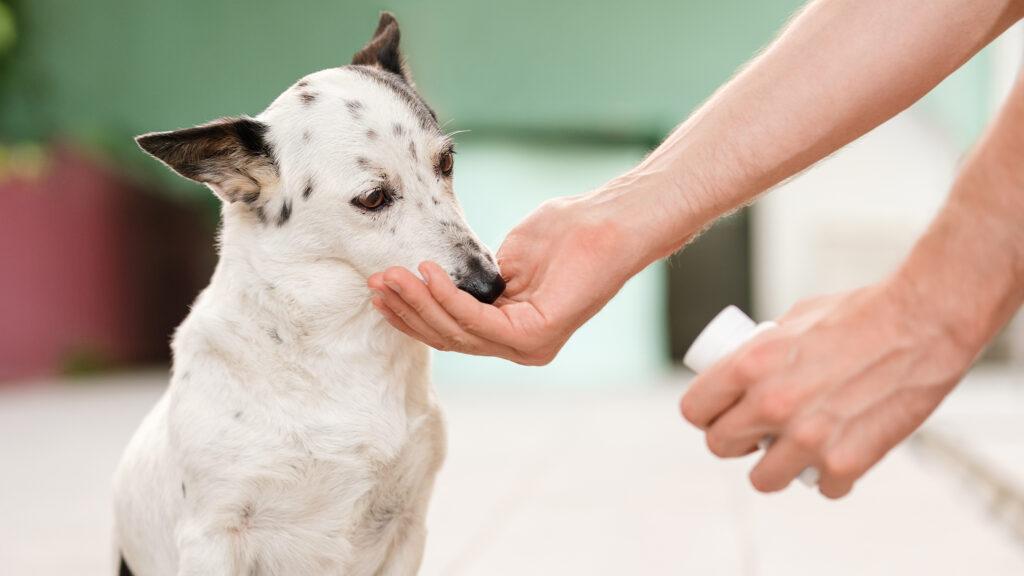
Refer to the manufacturer’s label for information on glucosamine doses. Although they are uncommon, glucosamine overdoses usually start off as vomiting or diarrhoea. Take note that the majority of products demand for a brief window of “double dosing,” often known as the “loading dose.” In a sense, it expedites the advantages. It is possible to use ordinary dosage, but the duration of the desired effects will be much greater. Observation of any change may take a month or two, even with appropriate dosage. Avoid quitting too soon.
Note: Don’t share your human vitamins with your dog; they might include dangerous substances like xylitol. Instead, choose supplements designed specifically for dogs.
Hyaluronic acid (HA) and fish oil are two other active components included in many dog glucosamine-chondroitin formulations. The most compelling evidence for fish oil’s effectiveness as a component of an arthritis therapy regimen for dogs is found in studies on the topic. Furthermore, HA has been shown in a study to have the capacity to raise synovial fluid in a joint. The oral version of HA has been demonstrated to raise synovial fluid in the joints, and it has long been used as an injectable to support joint health and relieve arthritis.
Look for the National Association of Supplement Companies (NASC) seal when selecting a glucosamine brand for your dog. This stamp attests to the product’s inclusion of the ingredients and dosages specified on the label. We would stay away from businesses without the seal.
Because arthritis develops gradually, it is not a good idea to assume that your dog has arthritis if they appear limp or sore when they move or get up. Your dog’s discomfort could be caused by a variety of issues in addition to arthritis. Never assume that a dog’s issue is arthritis, especially if the dog is elderly, or that glucosamine for dogs is a panacea. It’s not. It won’t help with conditions other than arthritis, but it will support joints that are arthritic.
Furthermore, if your dog’s discomfort is too severe for a joint supplement, he might require painkillers which are used a lot for dogs with severe arthritis.
Lastly, confirm that your dog weighs a healthy amount. Continue doing frequent, safe exercise, such as taking long walks and playing gentle games. Continue seeing your veterinarian, and let them know if you see any signs of early arthritis. The better the outcome, the earlier oral supplements like glucosamine are started for dogs. Starting joint-supporting supplements, like as glucosamine, early on, before arthritis develops, seems to offer some preventive benefits for active athletic dogs.
If you are interested in more information about supplements or one of our Posh Braces contact us via our contact form or visit our Facebook Page.
Enzyme therapy is a holistic approach that involves the use of specific enzymes to support the healing process in injured dogs. While some anecdotal evidence and studies suggest potential benefits, it’s important to note that this approach should be used under the guidance of a holistic veterinarian, and more research is needed to fully understand its efficacy. Here are some aspects of enzyme therapy that may be considered for quick dog injury recovery:
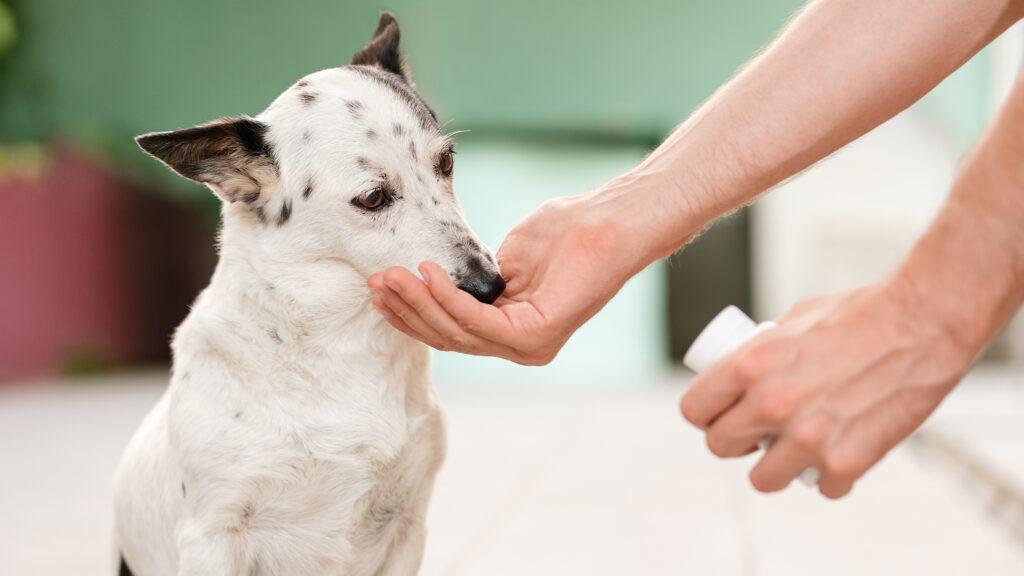
It’s essential to approach therapy with caution and only after consultation with a veterinarian. Enzyme supplements may interact with medications or have contraindications for certain medical conditions. Additionally, the quality and source of supplements can vary, so it’s important to choose products from reputable manufacturers.
While some pet owners report positive experiences with this therapy, it should not replace traditional veterinary care. Veterinary guidance is crucial to ensure that the chosen therapy is appropriate for the specific injury and overall health of the dog. Always discuss any complementary or alternative therapies with your veterinarian before incorporating them into your dog’s treatment plan.
If you are interested in a Posh Dog Knee Brace contact us via our contact form or visit our Facebook Page for more information.
When looking to buy therapeutic-quality essential oils for dogs, it’s essential to be cautious and choose products that are safe and suitable for canine use. Here are some tips to help you identify and purchase high-quality essential oils for your furry friend:
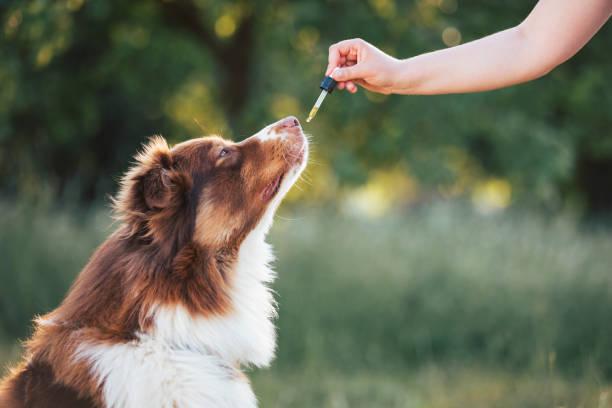
Remember that each dog is unique, and what works well for one dog may not be suitable for another. Always prioritize your dog’s safety and well-being, and seek professional advice if you have any doubts about using essential oils for your canine companion.
If you are interested in a Posh Dog Knee Brace you can contact us via our form or visit our Facebook Page.
Hey guys! Nikki, Lead Veterinary Technician with Posh Dog Knee Braces here. Let’s talk about the importance of pet insurance. I know I have touched on this before, but let’s explain the benefits, especially where orthopedics are concerned. If you asked me 2 years ago, I did not have my dog’s insured, and thought they were healthy, so it’s a waste of money right? Boy was I wrong. My very healthy 8 year old athletic dog went down suddenly, not wanting to get up or eat. I immediately took her to the emergency vet, where it was diagnosed she had a ruptured splenic tumor.
Let’s just say the bills from this visit were astronomical, and still I couldn’t save my dog. Now I am still paying off a bill for a dog that has been gone for over 2 years now. I can’t blame the vet, they did everything they could to save my girl. I can only blame myself, because I knew about insurance for her and still held off.

Now with my new girl Coco, we immediately got pet insurance. She has had cheat grass in her ears, tummy infections, and everything was covered. I would be another few thousand in debt if I did not have insurance on my girl.
Let me tell you about a family member’s dog. He developed a cough, which turned out to be the start of heart failure. To treat him for just 2 days, in order to get him stable to go home, was over $5,000. They were not ready to say goodbye to their fur baby, and of course put this on their credit card. They are now into their dog about $10,000. He is doing much better, but they will also be paying for his care many years after he has passed.
My insurance will cover up to 90%, leaving only $97 if I ever need a custom posh brace for Coco. Now that $35/month is sounding better and better I bet. Or, if your dog has any other orthopedic issues, such as luxating patella, shoulder issues, spinal issues, those are all covered.
I have another scenario that happened to a client’s dog. He was diagnosed with degenerative disc disease, common in daschunds and other small breeds, and one day could not walk on his hind legs. He needed emergency surgery, which was over $10,000, in order to walk again. Thankfully the owner had insurance, and was able to do the surgery with under $1k out of pocket. He went on to live another 5 years, running and playing like nothing happened.
So, I urge you, if you are on the fence about insurance, please take some time to call a few companies. There are many to choose from now, and most are very affordable. Much more affordable than a monthly credit card bill for treatments. Don’t let money ever be the reason to say goodbye to your best friend. Feel free to reach out to us if you would like some suggestions on companies that we know work with braces. Thanks!
You can contact us via our contact page or you can visit our Facebook page to talk to others who have used our brace.
Rehabilitation therapy, also known as physical therapy or physiotherapy for dogs, offers a wide range of benefits that can significantly improve their overall health, mobility, and quality of life. It is especially beneficial for dogs recovering from injuries, surgeries, or managing chronic conditions.
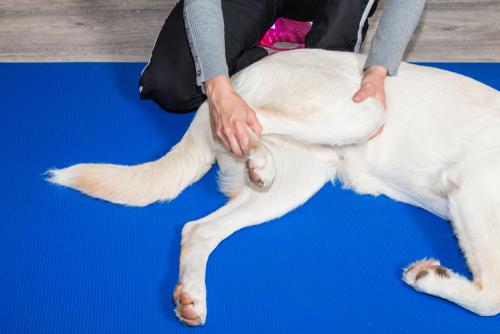
Rehabilitation therapy for dogs is typically provided by licensed veterinary professionals, such as certified canine rehabilitation therapists (CCRT) or veterinarians with specialized training in physical therapy. If you believe your dog could benefit from rehabilitation therapy, consult with your veterinarian to discuss the best options for your dog’s specific condition and needs.
If you are interested in a Posh Dog Knee Brace visit our store page to purchase and if you need more information or would like to keep up to date on new things with Posh Dog Knee Brace visit our Facebook page.
Your dog may induce a yeast infection by repeatedly licking his painful paws, which can spread on its own and result in even more itch and suffering.
On canine skin, spore-producing yeasts or fungi typically coexist without posing a threat, but they occasionally have the potential to become out of hand. When this occurs, a dog’s paws get extremely itchy and the dog starts to lick them. They can quickly turn red and inflamed, have a cheesy, musty, or pungent smell, and develop a brown discharge in the nail beds.
Malassezia pachydermatis, a type of yeast that thrives in warm, humid settings, is typically to blame. The most common reason of this overgrowth is allergies, which also cause itching and cause the dog to lick his feet, which leads to moisture buildup and skin damage, which is what causes the yeast overgrowth. Additionally, a cut, abrasion, or other paw injury might cause licking and a Malassezia infection.
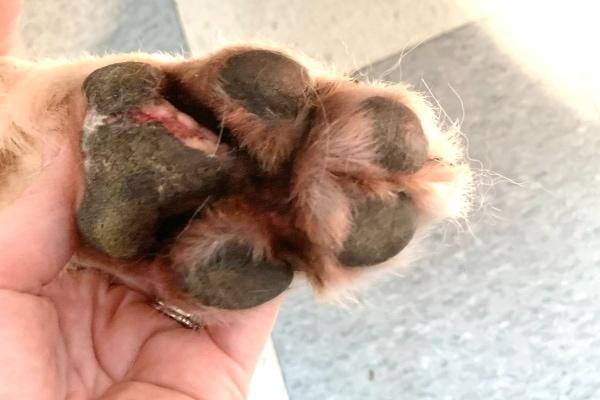
The looks and smell of the dog’s paws make it simple to diagnose a yeast infection, but a veterinarian can also make sure of this by looking at some of the dog’s skin cells under a microscope.
Dogs with creases in their skin, too much hair between their toes, underlying medical issues, or immunological illnesses may be vulnerable. Bulldogs, Cocker Spaniels, Basset Hounds, Retrievers, Shih Tzus, Poodles, English Setters, West Highland White Terriers, English Springer Spaniels, and Dachshunds are the breeds most frequently affected by paw pad yeast infections.
Yeast infections are typically secondary, not primary, meaning that they appear after another condition has compromised the dog’s overall health and allowed yeast cells to grow. When a dog develops recurring infections, the veterinarian will seek for indications of an underlying medical issue that may be aggravating the disease. Recurrent Malassezia infections have been linked to a variety of illnesses, including hypothyroidism, Cushing’s disease, food allergies, an autoimmune disorder, and skin cancer.
Chlorhexidine, miconazole, ketoconazole, and itraconazole are medications that treat canine yeast infections; these should be administered as directed by your veterinarian and may involve soaking the affected paws. After treatment, be sure to completely dry your dog’s feet. You may prevent yeast infections from spreading by keeping your dog’s feet dry and clean and visiting your veterinarian as soon as symptoms develop.
Oral antifungal drugs like fluconazole or itraconazole, which inhibit yeast cells from reproducing systemically in severe or recurrent instances.
Ineffective and unsupported by clinical research are common home therapies including vinegar foot soaks, Epsom salt baths, hydrogen peroxide, and witch hazel sprays. Other untested methods include switching to a “yeast-free” or “anti-yeast” dog food or limiting the amount of carbs in your dog’s diet. You can also add yogurt, probiotics, or coconut oil to your dog’s meal.
Making dietary improvements for your dog is a better nutritional strategy. His skin’s health can be enhanced by feeding it higher-quality protein sources and other substances, which will build its defenses against fungus and yeast. A food elimination trial is also necessary if food allergies are suspected; ask your veterinarian for advice on how to carry out a successful food elimination trial.
If you have any questions or would like more information please fill our or contact form for visit our Facebook Page.
Improved cognitive performance, joint flexibility, and immune function, including the prevention of mild skin allergies, are just a few advantages of salmon oil for dogs.
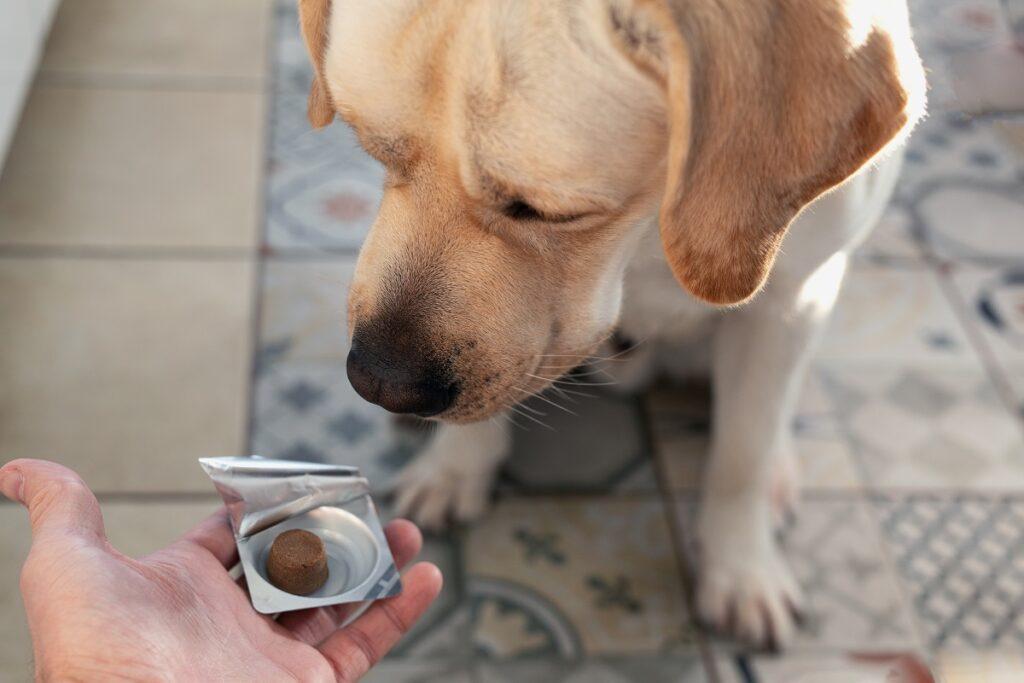
In addition, fish oil can help dogs with heart and kidney problems, and DHA is believed to help with eye and brain development in puppies.
The omega-3 fatty acids eicosapentaenoic acid (EPA) and docosahexaenoic acid (DHA) should both be present in the salmon oil supplement you choose for your dog.
Wild, cold-water fish that have just been captured is the best source of fish oil supplements. You want a product that has been screened for impurities like heavy metals and is produced by a company that employs sustainable fishing methods.
Choose brands bearing the National Animal Supplement Council (NASC) mark to verify that high-quality ingredients are utilized and that the contents correspond to the claims on the label because pet supplements are not FDA-regulated.
Work your way up to a dose of salmon oil that is approximately 25% of the recommended amount listed on the product label. Maximum doses are not always tolerated by all canines.
Some adverse effects of are:
Salmon oil should probably be avoided by dogs who have clotting issues. Always consult your veterinarian to determine whether salmon oil is appropriate for your dog, given his health history, current diet (which may already include omega-3 fatty acids), and medications. Medication interactions with other medications, such as NSAIDs, are possible.
All fish oil products should be safely stored away from direct sunlight in a cool environment.
If you are interested in any of our products or have questions you can visit our contact form for more information or you can check out our Facebook Page.
Can dogs drink apple cider vinegar? Folk remedies for a wide range of human maladies have long used this affordable liquid. It provides exactly as many advantages for dogs when used topically or taken as a supplement.

Apple cider vinegar (ACV) is touted by proponents as one of the least priced, most adaptable, and most powerful canine health remedies.
It’s a well-liked treatment when applied topically for:
When ingested, apple cider vinegar is alleged to:
In the beginning, cider vinegar is a mixture of water and apples or apple pectin, a soluble fiber. All vinegars are made from liquids containing sugar. The natural sugars in apples undergo fermentation and turn into alcohol when they are exposed to air, which enables yeasts to flourish. Acetic acid bacteria convert the alcohol over the course of fermentation into acetic acid, the primary constituent of vinegar. Vinegar’s characteristic flavor, aroma, and qualities are all due to acetic acid.
Given its culinary use, most supermarkets have a range of vinegars, including balsamic (a thick, extremely flavorful grape vinegar), white or red wine vinegar, and vinegars derived from malt, rice, champagne, sherry, beer, and various fruits.
In the US, distilled white vinegar is commonly available. It is a common ingredient in salad dressings, pickles, catsup, and barbecue sauces and is made from grains. It is also used as a home cleaning agent.
Apple cider vinegar, on the other hand, is sometimes offered as a raw (unpasteurized) product that also includes the vinegar’s “mother,” a hazy liquid that contains acetic acid bacteria that have not been filtered. Some who view vinegar as a health supplement favor unpasteurized, unfiltered vinegar.
While no clinical research examining cider vinegar’s impact on dogs have been published in the medical literature, reports regarding its health advantages are anecdotal. This doesn’t mean that the claims regarding its applications have been refuted; rather, they haven’t been put to the test, mostly because apple cider vinegar is cheap, generally accessible, and unpatentable.
A few of the assertions are overstated. For instance, cider vinegar is sometimes referred to as a nutritious powerhouse that is packed with vitamins and minerals, but this is untrue. The sole important nutrient in raw cider vinegar, according to the U.S. Department of Agriculture, is 11 milligrams (mg) of potassium per tablespoon.
While it might help avoid urinary tract infections, apple cider vinegar is not a treatment for that ailment. It also won’t cure the cancer that your dog has.
The usual dosage of apple cider vinegar for dogs is as follows:
The following techniques can be utilized to use apple cider vinegar as a gentle cleanser and disinfectant:
To enhance the coat, digestion, or general health of your dog:
The majority of herbal tinctures contain alcohol, however cider vinegar is the recommended solvent for canine tinctures. Rosemary Gladstar, a herbalist and dog lover, suggests putting chopped fresh or dried herbs in a glass jar (if using dried herbs, fill the jar only halfway to allow for expansion), gently heating raw organic cider vinegar, covering the herbs with warm (not hot) vinegar, leaving a 2- to 3-inch margin, covering the herbs with vinegar, closing the lid, and letting the herbs soak for four to six weeks. Each day, shake the jar. Put the tincture through a strainer, bottle it in amber or cobalt glass with a label, and keep it away from heat and light.
A garlic/dandelion vinegar tincture is suggested as a general tonic and to aid dogs in parasite prevention in addition to the plants described in her books and in canine herbal literature. Use equal amounts of fresh or dried dandelion leaves, roots, and blossoms together with equal amounts of garlic and proceed as directed above.
Tinctures should be progressively increased to 1/4 teaspoon per 20 pounds of body weight per day and added to your dog’s diet.
For the majority of canine uses, cider vinegar needs to be diluted due to its acidity. Although vinegar will sting if applied to broken skin, keep it away from the eyes, mucous membranes, and open cuts or abrasions.
Anywhere wood floors, cabinets, or granite countertops could be stained or damaged, vinegar should not be used. Because cider vinegar is orange-brown in color, it should not be used topically to dogs with white or light-colored coats or in areas where it might discolor white or light-colored carpets or fabrics.
Test a small patch of exposed skin with diluted cider vinegar before to applying it to a dog with sensitive skin, and after 24 hours, look for any signs of irritation, itching, or scratching. Use mild doses like those mentioned above if your dog doesn’t respond negatively. Too much cider vinegar consumption can cause mouth discomfort, vomiting, and tooth enamel erosion.
If you need more information about any of supplements or questions about our Posh Dog Knee Brace you can contact us through our contact form or Facebook Page.
Although vitamin E is beneficial and secure for dogs, not all canines require it. But, dogs taking fish oil may benefit from taking a vitamin E supplement.
Although knowledge about vitamin E dosages may leave you dizzy, vitamin E is healthy for dogs. The recommended vitamin E dosages for dogs seem to vary widely. Even worse, dosages may be indicated in milligrams or international units (IUs) (mgs).
The fact that there are two main types of vitamin E—natural and synthetic—with varying potencies and, consequently, various vitamin E dosages, just adds to the confusion. Although there is a lot to take in, we have the information you require regarding vitamin E supplements for dogs.
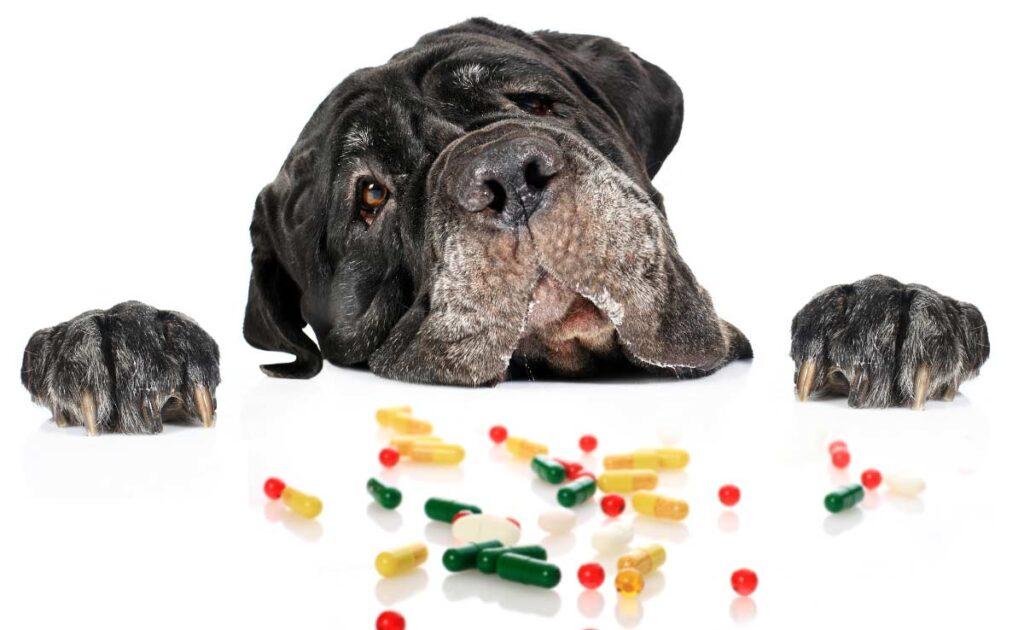
Since vitamin E is an antioxidant, it aids in defending the body’s cell membranes. It contributes to fat metabolism, strengthens immunity, and increases fertility. Your dog’s skin, hair, muscles, and vision will all benefit from it.
Although canines can safely consume vitamin E, not all dogs require a supplement. Canine vitamin E insufficiency is uncommon because most dogs consume plenty of it in a balanced diet. If you’re worried, your veterinarian can order blood tests to determine whether your dog actually has a deficiency.
It’s okay to apply topical vitamin E oil to dogs. Alpha tocopherol and an oil, like virgin olive oil, should be listed under ingredients. It can be used to paw pads, dry cracked nostrils, and irritated or crusty skin regions.
Vitamin E may be advantageous for dogs using fish oil. The beneficial polyunsaturated fatty acids in fish oil for your dog can eventually deplete the body’s vitamin E reserves. The tiny quantity of vitamin E found in fish oil supplements mostly serves as a preservative and is typically present in proportions that are too low to raise your dog’s levels. For dogs getting fish oil, the most typical guideline for vitamin E supplementation is 400 IU of vitamin E for every 1,000 mg of fish oil.
You must first identify the type of vitamin E present in the bottle you bought in order to estimate the recommended dosage for your dog:
Vitamin E occurs naturally as d-alpha tocopherol (d-).
You’ll then need to perform some math. Keep in mind: 2 mg of synthetic vitamin E (dL-) are equivalent to 1 mg of natural vitamin E (d-).
You may also need to convert IU to mg or mg to IU, which isn’t difficult:
So, using these formulas, here are examples:
Of course, aside from the fish oil indicated above, that still leaves open the question of how much vitamin E to give your dog. As a result, we list a few issues in our chart below, along with suggested dosages, that your dog may benefit from vitamin E supplementation for.
Please note that while all of these dosage suggestions are off-label, they were all drawn from renowned veterinary medicine formularies. Never administer a supplement of any kind to your dog without first consulting your veterinarian.
In dogs, vitamin E is mostly harmless; overdose problems are uncommon. Accidental acute overdose typically causes gastrointestinal distress, including vomiting and diarrhea. Persistent overload may result in problems with the other fat-soluble vitamins’ absorption (A, D, and K). When fed too much vitamin E, dogs with low vitamin K levels may experience excessive bleeding due to coagulation issues.
For more information about Vitamins contact us via our contact page or visit our Facebook page.
Although fish oil has been shown to have many health benefits for dogs with arthritis, it can also aid your dog’s skin irritation, brain function, and other conditions.
Veterinarians frequently suggest fish oil for canine arthritis. This is due to the fact that this oil is a natural anti-inflammatory that has been shown to relieve sore joints.
When supplementation began, arthritis-ridden dogs “had a considerably increased ability to rise from a resting position and play at six weeks and enhanced ability to walk at 12 and 24 weeks, compared with control dogs.” But that’s the problem. You must allow the fish oil time to function. Clinical progress might not be seen for at least a few months.
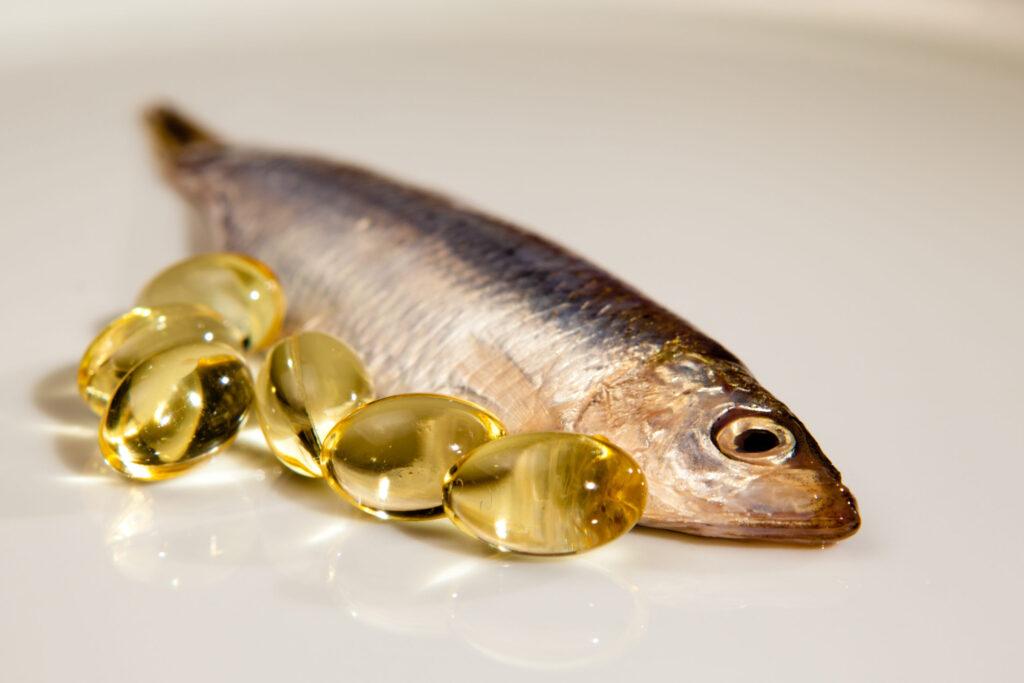
This supplement can help with the following in addition to arthritis:
Salmon, sardines, and anchovies, which are cold water fish, are the typical sources of this oil.
Eicosapentaenoic acid (EPA) and docosahexaenoic acid are two of the omega-3 fatty acids that are abundant in fish oils (DHA). The anti-inflammatory effects of EPA and DHA provide advantages for the skin, heart, kidney, brain, and joints.
You can begin taking fish oil supplements at any age, but if your dog is still a puppy or taking medication, talk to your physician first. For an energetic, athletic dog, sooner is preferable to later.
Depending on the ailment being treated, the recommended dosage of combined EPA and DHA (omega-3 fatty acids; see sidebar) ranges from 70 to 310 milligrams per kilogram (mg/kg) of body weight, or 1 mg per 2.2 pounds of your dog’s body weight. The National Research Council (NRC) states that 370 mg/kg is the maximum safe level.
Introduce your dog to fish oil gradually to ensure that it is tolerated because some dogs can be sensitive to them, particularly if they have a history of pancreatic or gastrointestinal problems. Dogs who consume too much may get vomiting, pancreatitis, and greasy diarrhea.
Make sure to include the fat content of fish oil in your dog’s calorie budget if your dog is overweight. The veterinarian of your dog should be consulted if you are unclear of the recommended dosage for your dog.
What Benefits Does Fish Oil Provide Dogs?
The quality of supplements like fish oil is not regulated by the American Food and Drug Administration (FDA). To ensure that you are giving your dog is safe and devoid of toxins like heavy metals or polychlorinated biphenyls, please make sure you buy it from a reliable supplier (PCBs).
We advise selecting a fish oil dietary supplement that bears the National Animal Supplement Council (NASC) seal. The NASC is an independent organization that makes certain that its member businesses follow the high requirements for ingredient quality and advertising techniques.
If you would like to know more about supplements for your dogs ormore information on our Posh Dog Knee Brace, you can contact us via our form, click here, if you would like to check out our Facebook Community click here.
Give Your Dog a Big Hug from Us! Let Your Dog Recover With Our Custom Dog Knee Brace!
We’ve Helped Thousands Of Dogs, Now We Want To Help Yours… The Most Comfortable Dog Knee Brace For Dogs With A Torn CCL/ACL!
We Accept Care Credit Financing.
Our Custom Dog Knee Brace Is Much More Effective Than A Ready To Wear, Or A Soft Dog CCL Brace. The No-Casting Posh Dog Knee Brace: We Made The Cast, An “Ordeal” Of The Past.
CBD for dogs can benefit dogs with a variety of problems, including pain and anxiety, but you must choose a canine CBD product from a trustworthy supplier.
Cannabidiol (CBD), a cannabis plant derivative that has no psychotropic ingredients, is now widely available in pet supplements.
According to “Pet Supplements in the U.S.,” 21% of dog owners bought CBD dietary supplements in 2020. According to Packaged Facts, sales of CBD for dogs products are expected to reach $95 million in 2020, a 217% rise from the previous year. Additionally, all of the nation’s top chains of pet supply stores have established retail ties with the producers of CBD dietary supplements.
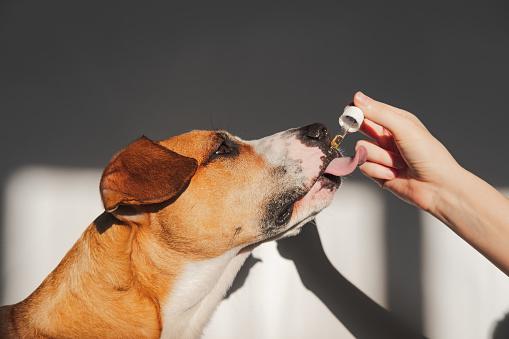
You can see that there are many different CBD for dog products available. How do you decide?
Products made from hemp but without CBD may have health benefits, but if you want your dog to specifically benefit from CBD for dogs, you must choose a CBD-containing product!
Verify the dates! Reputable manufacturers provide the lab results for their items on their websites or have QR codes that link to online reports. The report must include the date, a detailed description of the tested item, as well as the name, contact information, and phone number of the test provider.
To ensure that you can administer dosages consistently for a predictable impact, the lab report should list the cannabinoids that are present in the product and their concentrations.
Avoid a firm’s items if the product label or company material implies that it is a panacea for all of your dog’s ailments. Avoid “treats” as well, which are considered foods and are therefore prohibited from having CBD. “CBD dog treats for anxiety” is one example. Laws governing labeling violations are a sign of a novice or dishonest product maker. Avoid the business in either case.
The findings of a research that examined goods that contained hemp or cannabidiol compounds were released by the U.S. Food & Drug Administration (FDA) in 2021. Tests were performed on nearly 150 goods to identify the cannabinoids that were present in them. Less than half of the surveyed items had cannabidiol concentrations that were 20% or less of what was stated on the label.
Such outcomes are intended to be avoided by using certification from the NASC and third-party lab testing.
First-time users will benefit from advice on dosage and what kind of product will work best for their dogs. Since veterinarians aren’t allowed to discuss CBD for dogs with their patients in most states, let alone recommend a specific product, the next-best resource is an experienced user who has a close, long-term retail relationship with ethical product suppliers.
An increasing number of dog owners who support CBD for dogs do so because they feel it treats cancer and immune-mediated disorders while reducing anxiety, seizures, discomfort, and allergies. Manufacturers of CBD supplements, however, who are subject to regulation under the Dietary Supplement Health and Education Act of 1994 (DSHEA), are not permitted to make “drug” claims about how CBD treats or alleviates any illness or medical symptom.
Because there were considerable legal obstacles for both academic and commercial study into CBD, as well as restrictions for growing and harvesting these plants, then refining and marketing products that include CBD for dogs, up until recently, CBD’s appeal has been largely driven by anecdotal evidence. When the Agriculture Improvement Act, also known as the Farm Bill, was passed in 2018, it descheduled cannabis species with less than 0.3% dry weight of delta-9 tetrahydrocannabinol (THC), removing these obstacles and opening the door to both commercial production of CBD-containing goods and research into its safety and advantages.
Studies have so far shown promise. Researchers from Cornell University conducted a 2018 study on dogs with osteoarthritis that revealed no adverse effects, a considerable reduction in pain, and an increase in activity. A tiny Colorado State University study (16 dogs) examined the use of CBD for dogs to treat canine idiopathic seizures and discovered that canines receiving CBD experienced an 89% decrease in seizure frequency.
Without plenty of anecdotal evidence that at least some of the products are beneficial to dogs, it is difficult to see how the CBD for dogs market could have expanded so quickly. In any young, rapidly expanding market, there are plenty of con artists, but few individuals keep buying useless products over and over again. The industry’s amazing rise indicates that they are effective, and the startling paucity of tales of negative experiences should persuade you to try CBD for your dog.
If you would like more information onthe CBD for dogs you can contact us through our contact page or check out our Facebook Page.
Any number of ailments might result in a dog’s hind-legs losing strength. The following hints will help your veterinarian identify the problem’s root cause.
Regardless of the source, a dog’s weakness normally manifests itself first in the hind limbs. This seems obvious given how much work the dog’s hind-legs perform. They are in charge of pushing the body upward from a seated or lying position as well as driving the body forward when moving. You will be made aware of a weakness-related issue if you experience difficulty with these routine daily tasks.
What does a weak set of back legs on your dog look like? Hind-limb weakness is indicated by a variety of behaviors, including slow rising, sinking on the back limbs, dragging the tops of the toes, swaying of the hind end, occasionally crossing of the limbs, intolerance to physical exertion, slipping, sliding, and collapse of the hind end. The ability to stand on its hind-legs may also suddenly disappear in your dog.
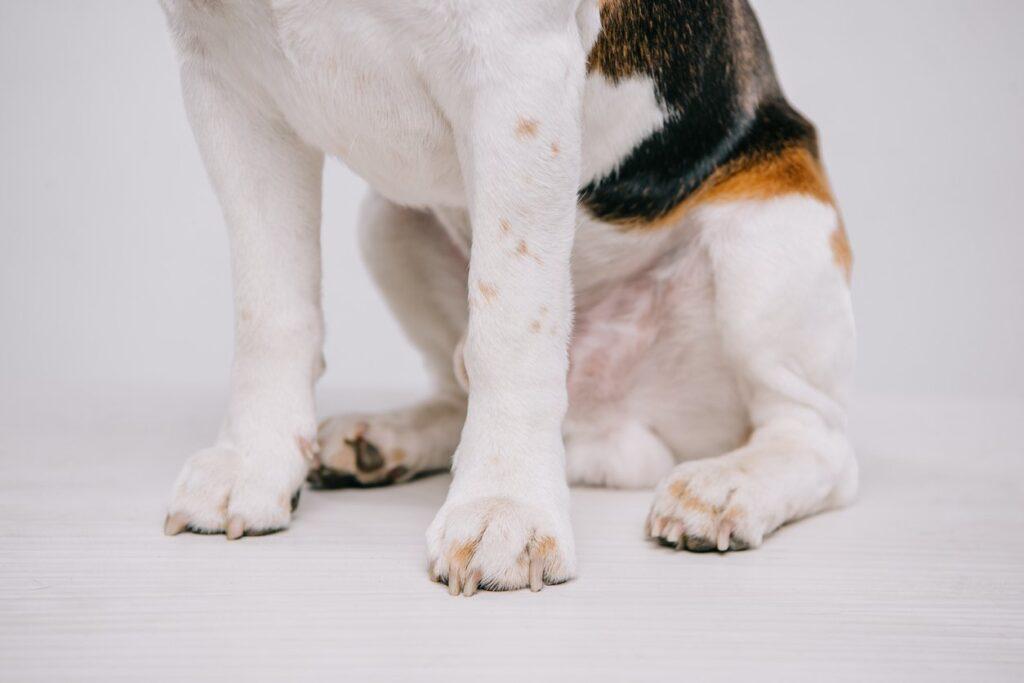
If your dog exhibits any of these symptoms, you should pay attention to a few details that can aid your vet in identifying the problem:
Some problems are more likely than others depending on your dog’s age and size. This is applied to the diagnostic procedure as well.
The four primary categories of causes of hind-leg weakness are orthopedic, neurologic, metabolic, and cardiac.
Chronic joint inflammation/pain is the primary orthopedic cause of canine hind-leg paralysis (osteoarthritis, degenerative joint disease). Although arthritis is obviously painful, it is frequently accompanied by compensatory pains, which are muscle aches and pains. The dog finds it difficult to stand up and move as a result. He might become more sedentary as a result, which would worsen the condition by causing him to lose muscle mass and fitness.
Due to the wear and tear on the joints over time, arthritis most frequently affects older dogs; overweight dogs endure an additional burden because of the increased tension those extra pounds place on the joints. Hip arthritis may appear in puppies of dogs with hip dysplasia, which results in improperly shaped hip joints. These arthritic disorders typically present with a delayed, sneaky onset of hind-leg weakening. It won’t appear to have occurred overnight.
Immune-mediated arthritis and Lyme arthritis are two acute types of arthritis that can cause a dog’s hind end to suddenly weaken. In addition to fractures and intervertebral disc disease (IVDD), overweight dogs frequently suffer from bilateral anterior cruciate ligament (ACL) tears, which are additional orthopedic reasons of hind-leg paralysis. Your veterinarian will be able to identify these diseases and recommend the proper treatment with the use of blood tests and x-rays.
IVDD: When an unhealthy disc (or discs) puts strain on the spinal cord and causes neurologic weakness, IVDD transitions from an orthopedic problem to a neurologic one. The majority of these instances are treatable medically, but surgery is necessary if paralysis develops or medical treatment is ineffective.
Spinal tumors: Similar symptoms are brought on by neurologic disorders such as spinal tumors. For a diagnosis, sophisticated imaging techniques like computed tomography (CT) or magnetic resonance imaging (MRI), as well as occasionally cerebrospinal fluid examination, are needed.
Diskospondylitis: An infection of the intervertebral disc and the ends of the surrounding vertebrae is known as diskospondylitis. It can be challenging to diagnose, produces hind-limb paralysis regularly, and is excruciatingly painful. Long-term antibiotic use is the course of treatment (six to 12 months). Your dog may need more x-rays and/or more sophisticated testing, such as CT or MRI, to make a certain diagnosis because this ailment can be challenging to diagnose in its early stages. These canines can fully recover if they are diagnosed and treated appropriately.
Lumbosacral stenosis: Cauda equina syndrome, or lumbrosacral stenosis, is a degenerative disorder that affects only the lumbosacral joint and is related to IVDD. This joint joins the last vertebra to the pelvic region. It differs from the other intervertebral joints in that the spinal cord sends all of the peripheral nerves that travel to the hind end to this joint. In addition to being extremely painful, this type of disease typically results in neurologic impairments and weak hind limbs.
Degenerative myelopathy: Weakness in the hind-legs is a symptom of degenerative myelopathy (DM), a slow but progressive deterioration of the spinal cord. Although it affects various breeds, the German Shepherd Dog serves as the disease’s mascot. Typically, older and middle-aged canines are affected. There is just supportive care available as a treatment for DM right now.
Myasthenia gravis: An autoimmune neuromuscular condition called myasthenia gravis (MG) causes muscle weakness that worsens with exertion. It may begin with weakness in the back limbs but quickly progresses to total body weakness and collapse.
Here’s a situation that is typical of Myasthenia gravis: Your dog wakes up after a nap and acts normally. As soon as you start walking, he begins to sink, slip, and stumble until he is unable to stand or walk. He can resume short-term function after a period of rest that enables the replacement of damaged neuromuscular transmitters. A blood test is required for diagnosis. Long-term therapy is required (six months or longer). Some canines will have remission and resume their regular lives. Others will require care and support throughout their lives.
Exercise-induced collapse: Labrador Retrievers and a few other breeds are susceptible to the genetic illness known as exercise-induced collapse (EIC). It usually manifests itself between the ages of 6 months and 2 years. It takes place following several minutes of intense exercise. The dog quickly starts to weaken and lose coordination in his hind limbs, eventually collapsing. For this, there is no cure. Avoiding vigorous exercise is one method of prevention. It is crucial that you get your puppy from a breeder who has tested the parents for this gene for the aforementioned reasons. Have your adoptive dog’s EIC gene checked if he exhibits these symptoms.
Idiopathic vestibular syndrome: In elderly dogs, idiopathic vestibular dysfunction is a frequent cause of weakness in the rear limbs and lack of coordination. It appears abruptly and may give you the impression that your dog is having a stroke. This disorder’s origin is uncertain. It typically comes with a head tilt and balance problems. With supportive care, the majority of dogs will recover in time.
Numerous illnesses transmitted by ticks can result in generalized neuromuscular weakness, which may first show in the rear limbs. If you notice ticks on your dog, let your vet know.
Hypoglycemia (low blood sugar), anemia (few red blood cells), and hypokalemia (low potassium) are a few examples of metabolic conditions that might weaken the hind-legs. Blood testing can quickly diagnose this. For these problems to be solved, identifying their underlying causes, which necessitates more diagnostic testing, is crucial.
Weakness can result from endocrine conditions such as insufficient thyroid hormone (hypothyroidism) and underactive adrenal glands (Addison’s disease). Blood tests are used to diagnose both conditions, and there is no cure.
Hepatic encephalopathy, a metabolic disorder that causes sporadic weakness and confusion and is most noticeable after eating, can be brought on by certain liver disorders.
All of the body’s tissues must receive sufficient blood flow and oxygen, which depends on healthy heart function. Weakness happens when heart function is compromised, regardless of the underlying cause. Again, for the reasons already mentioned, weakness in dogs typically manifests itself in the hind-legs first.
Heart illnesses that affect dogs include heartworm disease, congestive heart failure, heart muscle disease (cardiomyopathy), cardiac arrhythmias, cardiac or pericardial tumors, and fluid in the sac surrounding the heart (pericardial effusion).
Your veterinarian will discover a cardiac explanation for the hind-leg weakness you’ve noticed during your dog’s physical examination, and treatment and diagnosis will proceed from there.
As you can see, there are many different possible reasons why dogs’ hind limbs get weak. Because of this, it’s crucial to have your dog inspected if you notice this problem; never just brush it off as a “old dog” problem. Many of the underlying causes can be ruled out by your veterinarian, who can then hopefully provide a conclusive diagnosis. Even if your dog is quite old, diagnosing and treating some of these disorders can completely transform his life!
There is no cure for some chronic illnesses, such as osteoarthritis. However, there is a lot you can do to enhance and preserve your dog’s quality of life for a very, very long period. Your sensitive loving care and dedication to supportive measures are the first step.
Support for Mobility Issues Caused by Arthritis
If you are interested in more information about our Posh Dog Knee Brace you can contact us on our form or if you would like to purchase our brace you can click here, you can also join our Facebook Group page to hear how other dog parents help their dog with their pain management and therapies.
Hey guys, this is Nikki, Lead Veterinary technician with Posh Dog Knee Braces. So, today I would like to talk about probiotics for your dog. Let’s face it, we have all had a dog with diarrhea or gastritis at one point, and it is not fun. Weather you have a new puppy, and are switching to a better quality puppy food, or a dog that maybe likes to dumpster dive, or one that licks out of that gross water puddle on your walk, probiotics may be a good option for you.

They help with diarrhea, intestinal upset, and can also help with dog allergies. If you have a female dog, they may also help in countering UTI’s, or even anxiety. Some dog food manufacturers are getting on the probiotic train, and may already be adding this to their diet, especially some of the Raw food diets out there.
I like to give my dog probiotics proactively, such as before I leave on a trip, if there will be a petsitter coming. That is a stressful event, and I don’t need my dog to get a stressful tummy, or anxiety. They can also be given as a daily part of long-term health.
Did you know that 70% of your dog’s immune system is their GI tract? It goes the same for people in that sense. So, by taking care of your dog’s tummy, it makes for an easier transition if they need to take pain medications, supplements, stressful events coming up, or if they have acute diarrhea. I typically will give at least 7-10 day course for a dog with loose stool/diarrhea, or a new puppy. They can really help in prevention of stress colitis, and that very expensive veterinary visit that follows. You can also add a tablespoon of canned pumpkin along with the probiotics if treating diarrhea, such as a new puppy.
The good news is that there are lots of great probiotics available both by your veterinarian and online. I really like Fortiflora personally, by purina, however, Zesty Paws also has a really nice product. Just do your research, and make sure they have good reviews before purchasing. Let me know if you have any questions, poshdogkneebrace.com or you can visit our Facebook page.
Read reviews check out our Google Reviews online. Click Here